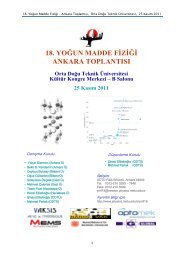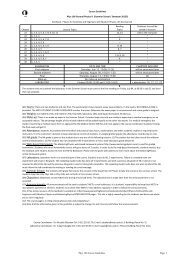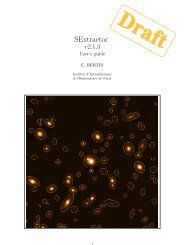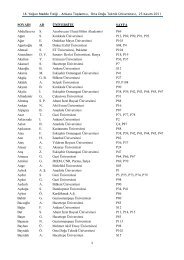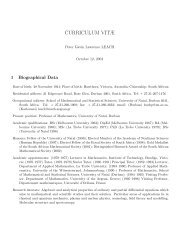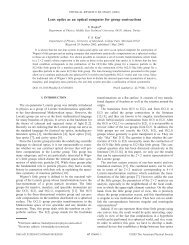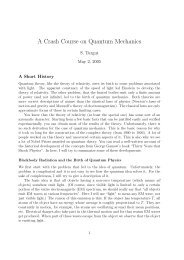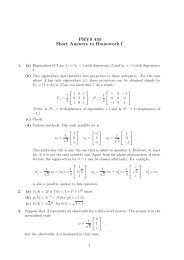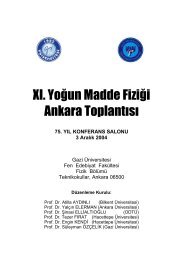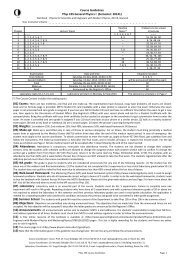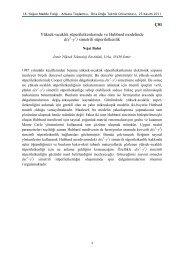PHYS-542: QUANTUM FIELD THEORY II HOMEWORK 3 (Due 14 ...
PHYS-542: QUANTUM FIELD THEORY II HOMEWORK 3 (Due 14 ...
PHYS-542: QUANTUM FIELD THEORY II HOMEWORK 3 (Due 14 ...
- No tags were found...
Create successful ePaper yourself
Turn your PDF publications into a flip-book with our unique Google optimized e-Paper software.
<strong>PHYS</strong>-<strong>542</strong>: <strong>QUANTUM</strong> <strong>FIELD</strong> <strong>THEORY</strong> <strong>II</strong><strong>HOMEWORK</strong> 3(<strong>Due</strong> <strong>14</strong> May 2013)Sudent: How do I learn physics ?Nike : Just do it !Q1: In λφ 4 theory with H I = λφ 4 /4!, show that the lowest order two particle elasticscattering cross-section is given bydσdω =λ2128π 2 s . (1)Q2: a) Using the lowest order diagram in QED, calculate the Colomb potential betweenand electron and a positron. ( Note, make every step explicit, I have already donetwo related problems in class, do not simply quote my results).b) How could you extend tyour previous result to get the contribuion of the magneticforce ?Q3: Up to now we have dealt with spin-0, spin-1/2 and spin-1 fields. Here, we willhave a glance at the spin-2 fields. Let h µν represent a spin-2 field that lives in a 3 + 1dimensional flat space. It is free lagrangian can be obtained from a linearization of theEinstein-Hilbert action ( which you don’t need to know ). Here is the lagrangian density.L = 1 2 ∂ µh µν ∂ ν h − 1 2 ∂ µh ρσ ∂ ρ h µ σ + 1 4 ηµν ∂ µ h ρσ ∂ ν h ρσ − 1 4 ηµν ∂ µ h∂ ν h,where h ≡ η µν h µν and η µν denotes everybody’s Minkowski space.a): Find the equations of motion assuming that the source term is κh µν T µνb): Under the transformations ( called diffeomorphisms) x µ → x µ + ɛ µ (x), how does thespin-2 field h µν and the lagrangian density transform ? ( Hint: The wording of this questionmight have scared the hell out of you, but it really is an easy question. h µν transforms likea good old covariant tensor. )1
= ∂ ν h/2 ) find the momentum space propaga-c): In the ”de Donder” gauge ( ∂ µ h µνtor.d): Using the momentum space progator find the Newton’s potential (from 1 gravitonexchange amplitude) between two static sources given as T 00 = m 1 δ 3 (⃗x − ⃗x 1 ) and T 00 =m 2 δ 3 (⃗x − ⃗x 2 ).e): How would you generalize the result to two moving masses ?2



